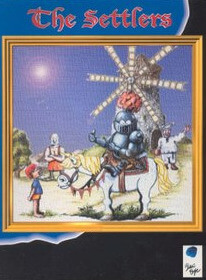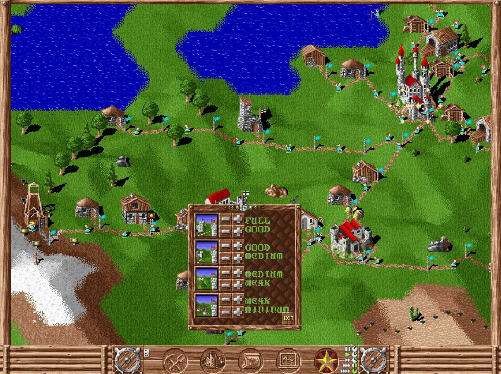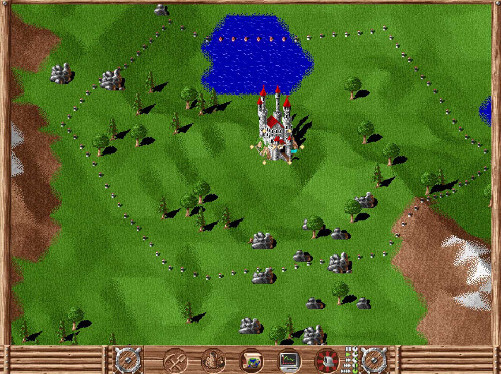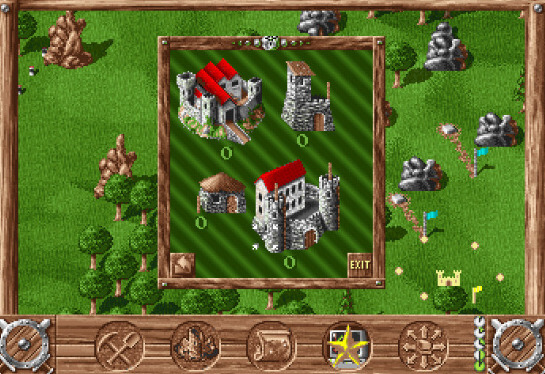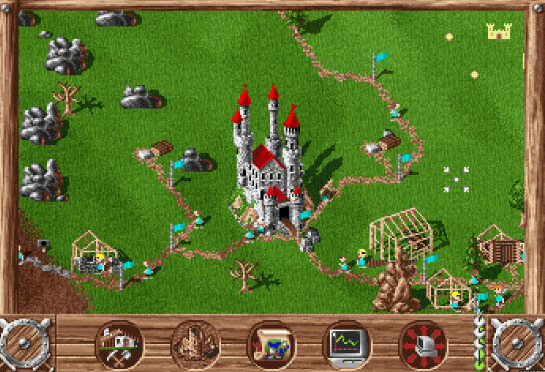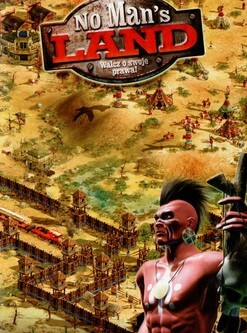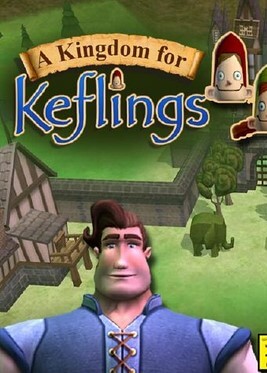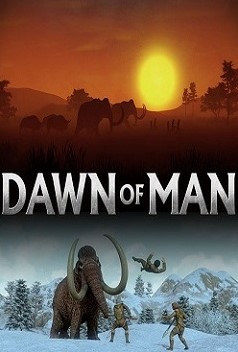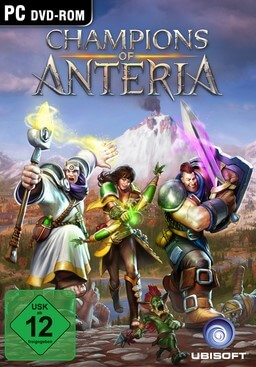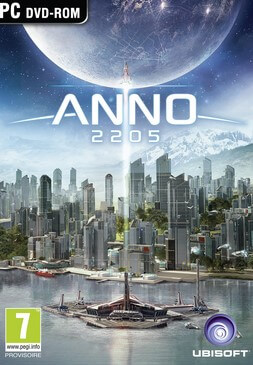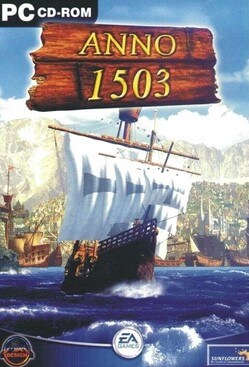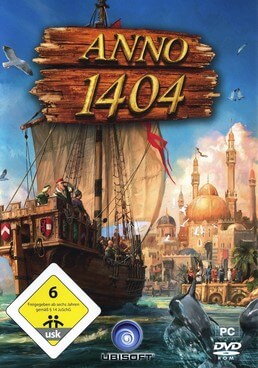The game received positive reviews, especially on the Amiga, where it was more widely reviewed than on MS-DOS. Critics especially praised the complexity of the economic system and the interrelatedness of the various buildings, as well as the graphics and sound effects. While some saw it as a god game, comparing it favourably to Populous, others saw it as a city-building game, comparing it favourably to SimCity. Others, however, felt it defined a new genre altogether by blending elements of god games and city-building games. It is often cited as one of the best Amiga games ever made. It was also a commercial success, selling over 400,000 units worldwide across both systems, considerably more than Blue Byte had anticipated. It went on to form the basis for The Settlers series, one of Blue Byte's most successful franchises.
Gameplay
The Settlers is a city-building game with real-time strategy elements, controlled via a point and click interface, in which the primary goal on each map is to build a settlement with a functioning economy, producing sufficient military units so as to conquer rival territories, ultimately gaining control of the entire map. To achieve this end, the player must engage in economic micromanagement, construct buildings, and generate resources.
Game modes
The game can be played in one of two modes. The first is a series of thirty sequential missions where the player, either alone, or teaming with a second player, competes against computer controlled opponents of increasing difficulty. The second is a free-game style mode, played on either a randomly generated map, or a pre-built map, based on data input by the player prior to commencing. The player can then refine the game by selecting the number of races (from two to four), choosing which commander should lead each race (there are ten different commanders, ranging from peaceful and placid to warlike and aggressive), refining the amount of raw materials available to each player at the start of the game, setting the intelligence of the settlers and knights in each race's service, and determining the rate at which each race's settlers produce items. Games involving two human players are played in split screen, with the second player using a mouse on the same PC. Two-player mode allows two players to either team up together to compete against one or two computer opponents, or compete against one another and up to two additional computer opponents.
Settlers and transportation
Whether playing a mission or a free-game, each game begins the same way; the player is presented with part of the map, usually a green area on which it is easy to build, and must construct their castle/headquarters so as to begin their settlement. The basic gameplay revolves around serfs (the titular "settlers") who transport materials, tools and produce, and who populate and perform the requisite task of each building. As the player constructs buildings and thus requires settlers to occupy them, the settlers automatically emerge from the castle as needed. As the settlement continues to grow in size, the castle's quota of settlers will eventually be reached, and the player will need to build a warehouse to generate more settlers. At no point does the player directly control any individual settler - instead, general orders are issued (such as ordering the construction of a building), with the AI handling the delegation of orders to specific settlers.
An important game mechanic is the construction of a road network so as to allow for an efficient transportation system, as any settlers transporting goods must use roads. To build a road, the player must place a flag, and then manually build the road using a series of on-screen prompts advising as to the best direction in which to build. To maximize distribution, the player must set as many flags as possible on each road. Flags can only be set a certain distance apart, and serve as transport hubs; a settler will carry an item to a flag and set it down, at which point the next settler along will pick up the item and continue, freeing the first settler to return and pick up another item at the previous flag. The more flags the player has, the more settlers will operate on a given road, cutting down the distance each settler must travel, and reducing the time to transport one item and return for the next, thus avoiding item congestion at each flag. When more than one item is placed at a flag, the game has an adjustable goods priority system, which determines the order in which items are transported. Waterways can also be constructed over small bodies of water in the same manner as roads, although the settlers need boats to cross.
Economy
The economy is under the player's control throughout the game, and is adjustable in multiple ways. For example, the player can control the distribution of goods by selecting how much of a given resource is transported to a given building, under five separate headings; food, wood, iron, coal and wheat. In a similar manner, the player can select what tools are made when; by increasing the significance of a particular tool, that tool will be produced before others. Tool production is important insofar as all buildings require raw materials and a worker with the right tool. For example, if the player has built a blacksmith, and the building is still empty despite idle settlers in the headquarters, a pliers will need to be manufactured in the toolsmith.
Military
The player's territory can only be expanded by building a military complex near the territory border. Each complex must have at least one knight garrisoned for the territory to expand. Knights are automatically created from the pool of existing settlers in the headquarters, with each individual soldier requiring a sword and shield. Once knights are garrisoned, gold coins can be transported to the building to increase their morale, which allows them to fight more aggressively. They can also be promoted through five ranks, receiving training in the castle, or when stationed in a building, although they rank up slower when stationed.
The player also has control over the structure of their military; and is free to change the number of settlers who become knights, the rank of first-line defence knights, how many knights from each building can be used offensively, how many knights counter the enemy if nearby buildings are attacked, and how many knights take up positions in buildings not visible to the enemy, buildings visible but not immediately under threat, buildings under threat, and buildings about to be attacked. The player can also order lower ranked knights to leave military buildings and return to the castle, replacing them with higher ranked knights.
In order for the player to attack an enemy building, they must click on that building, and select the number of units they wish to use to carry out the attack. If the player's units defeat all soldiers stationed in the building, they will occupy it, with the player's territory increasing according to the building's radius. Defense of the player's military buildings is automatic; as enemies attack, any knights stationed in the building defend.
